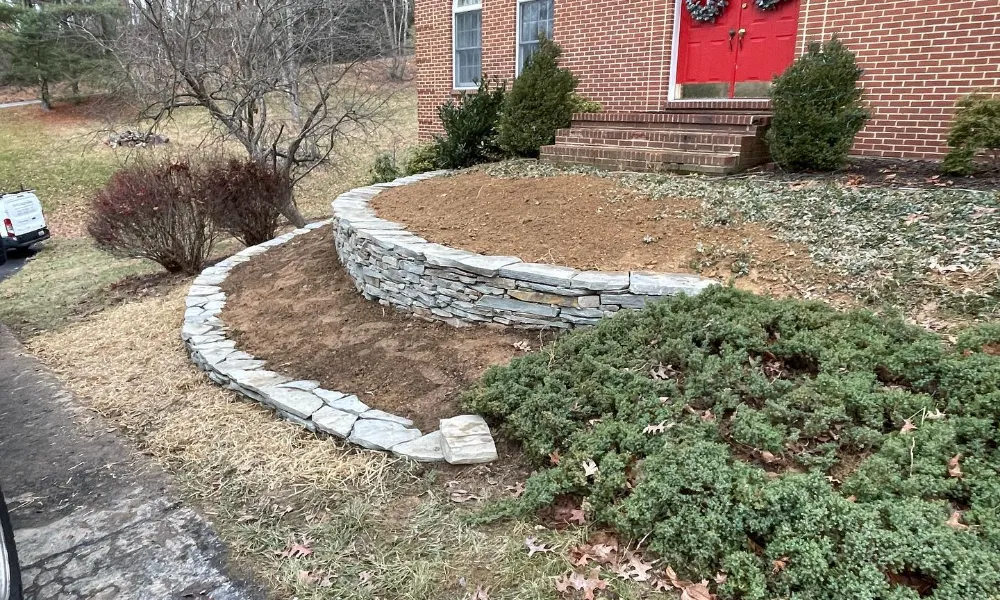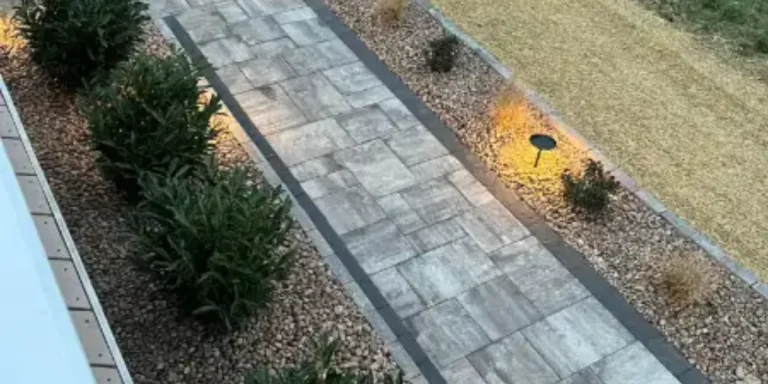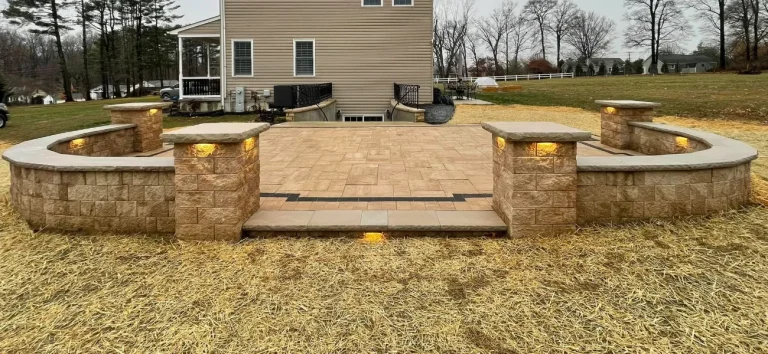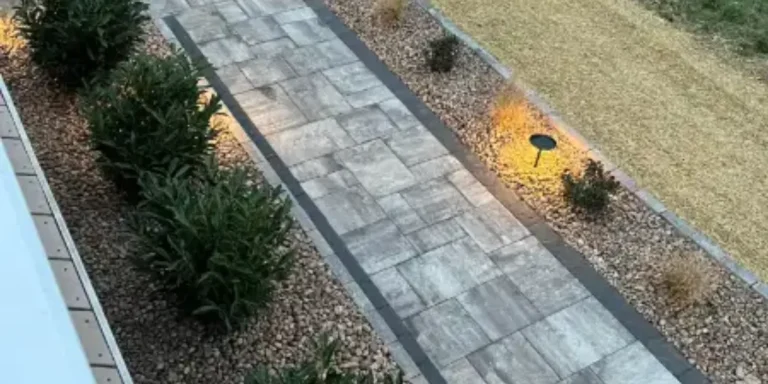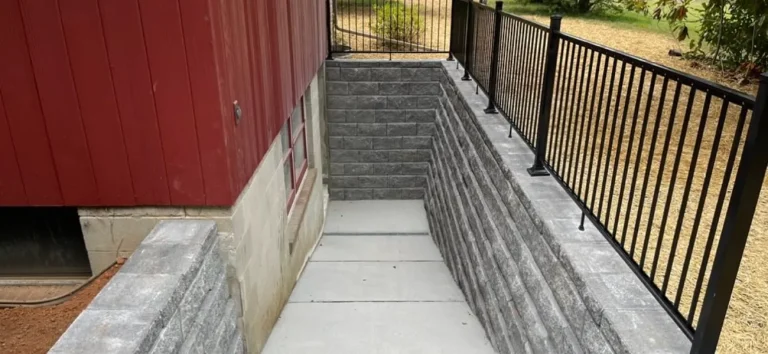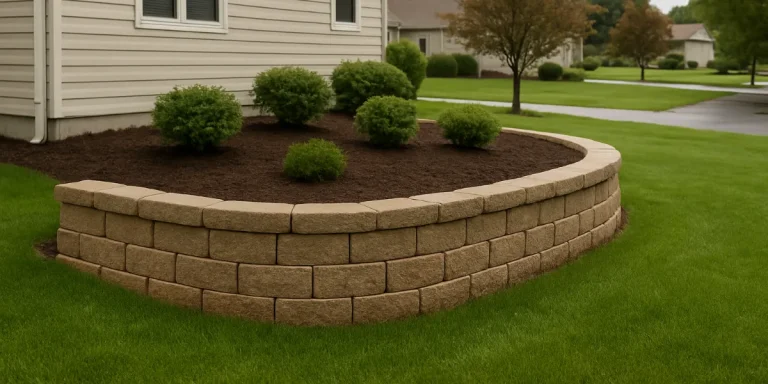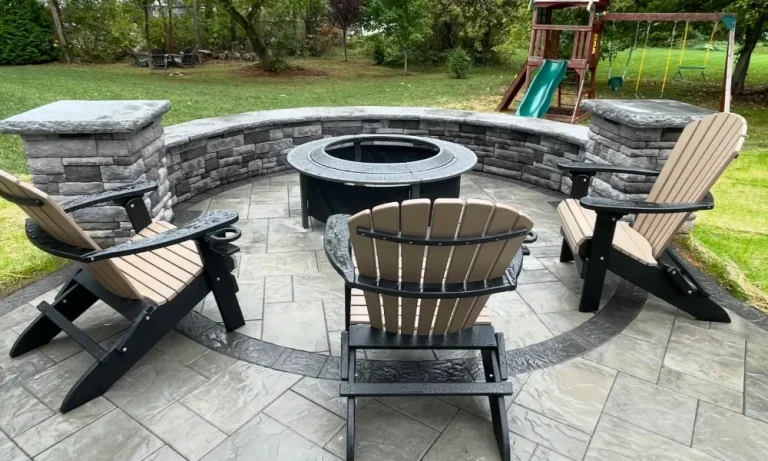Replacing a Failing Retaining Wall: Causes, Process, and Long-Term Solutions
Retaining walls play a critical role in stabilizing slopes, preventing erosion, and creating usable outdoor spaces. However, over time, even the strongest walls can fail due to age, improper construction, or environmental factors.
If you’re dealing with a failing retaining wall, the best solution is often to replace it entirely. Modern materials and proper installation techniques ensure the new wall is both durable and visually appealing, standing the test of time.
Here’s a comprehensive guide to understanding retaining wall failure and the steps involved in replacing it.
Common Causes of Retaining Wall Failure
Age and Wear
Retaining walls degrade over time due to exposure to the elements, constant soil pressure, and freeze-thaw cycles. Materials like concrete blocks can crack, mortar joints in a rock wall may weaken, and wooden walls can rot. If your wall shows signs of wear like significant cracking, tilting, or sagging, it’s likely reaching the end of its lifespan.
Shifting Ground or Improper Base Preparation
The ground beneath a retaining wall must be stable and properly compacted. Poor soil conditions, inadequate base preparation, or settling can lead to instability. When a retaining wall sinks or tilts, it’s often due to an insufficient or improperly compacted foundation.
Lack of Geo-Grid Reinforcement
Geo-grid is essential for reinforcing retaining walls subjected to heavy loads or surcharges, such as soil, driveways, or structures. Without geo-grid, walls are more likely to bow or collapse under pressure. A bulging wall is a clear sign that reinforcement was either inadequate or completely omitted during installation.
Poor Drainage
Water is one of the leading causes of retaining wall failure. Without a proper drainage system, water buildup behind the wall adds hydrostatic pressure, causing cracks, leaning, or even total collapse. Common signs include efflorescence (white deposits), seepage, or visible water pooling behind the wall.
Rotten Wood Retaining Walls
While wood retaining walls are cost-effective initially, they’re prone to rot and pest damage over time. Once the wood begins to decay, the wall loses its structural integrity, leading to sagging, gaps, or outright failure.
Why Repairing Failing Retaining Walls Isn’t Always Viable
When a retaining wall fails, it’s rarely possible to fix it in a way that guarantees long-term stability. Repairs often don’t address the underlying issues, such as improper drainage or a weak foundation. Patchwork fixes might provide a temporary solution, but they leave the wall vulnerable to future failures. In most cases, tearing out the old wall and rebuilding it properly is the most effective and reliable option.
The Process of Replacing a Failing Retaining Wall
Assessing the Damage
The first step is a thorough inspection to determine the cause of failure. This includes identifying drainage issues, soil stability, and the type of surcharge the wall must support. Understanding these factors helps plan for a replacement that won’t repeat the same mistakes.
Tearing Out the Old Wall
The old wall must be safely removed, and the materials properly disposed of. This involves clearing out surrounding soil and vegetation to prepare for excavation and reconstruction.
Re-Excavating and Preparing the Area
Once the wall is removed, the area is excavated to the proper depth and width to create a stable foundation. Poor-quality soil is replaced with compacted gravel or other materials to ensure stability.
Installing a Proper Base and Drainage System
A new base of compacted gravel or crushed stone is laid to provide a solid foundation. A drainage system, such as perforated pipes and gravel backfill, is installed to prevent water buildup behind the wall, known with the industry as "hydrostatic pressure".
Rebuilding the Wall with Modern Materials
The new retaining wall is constructed using high-quality materials, such as segmental blocks, designed for durability and longevity. Geo-grid reinforcement is installed if necessary to provide additional stability for taller walls or walls with heavy surcharges. The wall is built to manufacturer specifications and local building codes to ensure safety and performance.
Benefits of Rebuilding with Modern Materials
Durability and Strength
Modern retaining wall materials, such as segmental blocks, are engineered to withstand soil pressure, weather, and environmental stress. When properly installed, these walls can last decades with minimal maintenance.
Aesthetic Appeal
Segmental block walls are available in various colors, textures, and finishes, allowing homeowners to choose a style that complements their landscape. Decorative options like matching caps or integrated seating add both functionality and beauty.
Increased Property Value
A well-constructed retaining wall not only solves structural issues but also enhances the overall appearance and usability of your outdoor space, increasing your property’s value.
Our Service Areas in Maryland
At Harvest Outdoor Living, we specialize in replacing failing retaining walls with durable, expertly installed solutions. We proudly serve homeowners throughout Harford County and nearby areas, including:
-
- Bel Air
- Abingdon
- Fallston
- Forest Hill
- Jarrettsville
- Aberdeen
- Havre De Grace
- White Marsh
- Perry Hall
- Churchville
Whether you’re dealing with an aging wall, poor drainage, or unstable soil, our team has the expertise to build a retaining wall that stands the test of time.
Why Choose Harvest Outdoor Living?
Replacing a retaining wall is a complex project that requires expertise in excavation, engineering, and landscaping. At Harvest Outdoor Living, we handle every aspect of the process, from assessing your property to building a wall that is both functional and beautiful. Our team ensures that your new retaining wall meets the highest standards of safety and durability, giving you peace of mind and a stunning outdoor space.
Conclusion
A failing retaining wall can cause significant issues, but replacing it with a properly designed and installed solution will ensure long-term stability and beauty. With modern materials and expert craftsmanship, your new wall will not only solve structural problems but also enhance your landscape. Contact Harvest Outdoor Living today to schedule a consultation and let us help you transform your outdoor space with a retaining wall that’s built to last.

